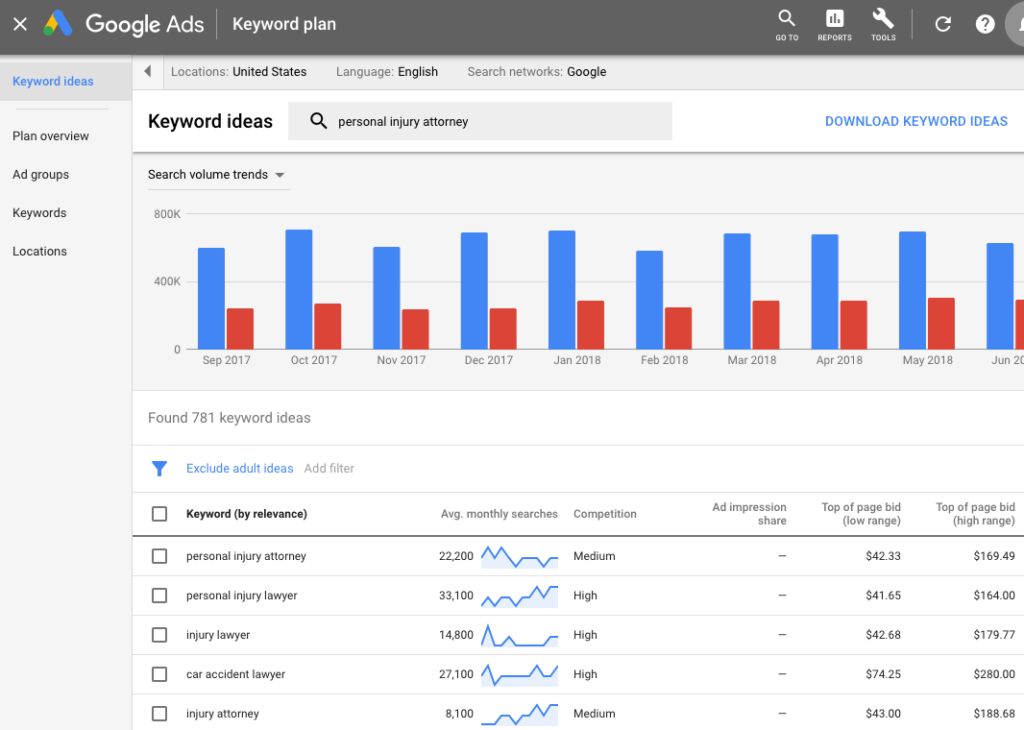When you’re building an SEO campaign for your website, there are a variety of tactics that you can engage in in order to drive higher levels of inbound traffic.
While many SEO marketers hone in on the keywords that have the highest search volumes as a way to generate inbound traffic, failure to recognize the value of longer phrases, less trafficked phrases (longtail keywords) to generate traffic can take away a world of opportunity.
Longtail keywords give you the ability to get more specific with your user’s searches, essentially widening your net to reel in those all-important page views and potential customer interactions.
What Are Longtail Keywords?
There are two types of keywords that you should pay attention to when you are building a campaign for inbound marketing. There are “head” terms, which are popular and frequently searched for, but are oftentimes more generic, as well as Longtail keywords that allow you to make your search terms more specific. For example, using a term like “sofas” would be a head term, but “compare prices of La-Z-Boy sofas” would be a longtail keyword. Longtail keywords are typically three words or longer.
Why Use Longtail Keywords?
In a word? Opportunity.
While many marketers generally go for head terms and more generic keywords, these are often much more competitive to rank for – and often times not as valuable for driving conversions. Longtail keywords are less competitive to rank for in organic searches, making them a great value for any online marketing campaign.
The return on investment can also be seen when setting up pay-per-click (PPC) campaigns, as longtail keywords are less expensive to bid for on the whole. Lastly, when a customer is searching with a longtail keyword, they’re usually more likely to be looking to purchase and are oftentimes more easy to convert into a sale.
How to Find Quality Longtail Keywords
Start by trying to think as someone who would be searching for your product or service. What kind of terms would they use to search?
From there, there are several research tools available to help you identify quality longtail keywords for your SEO campaign. Among them are:
Another creative way to identify quality longtail keywords is to start typing your keywords into Google’s search bar, which will serve up suggested searches for you that may be relevant to your company’s product or service.

How Do You Use Longtail Keywords To Generate Inbound Traffic?
 After you’ve discovered the longtail keywords that you want to add to your campaigns, it’s important that you develop high quality content for your website revolving around these longtail phrases that will help you generate the maximum amount of inbound traffic.
After you’ve discovered the longtail keywords that you want to add to your campaigns, it’s important that you develop high quality content for your website revolving around these longtail phrases that will help you generate the maximum amount of inbound traffic.
You can do this by building out a cluster of pages that are highly related within your website’s hierarchy that strengthens your keyword relevancy for core keywords by utilizing the longtails on your cluster pages.
(i.e.: Tattoo Removal, Does Tattoo Removal Hurt?, Tattoo Removal for Dark Skin, How Does Tattoo Removal Work?)
Another great way to target longtail keyword phrases is by utilizing these phrases in your blog posts. Focusing on well-written, SEO friendly, high-value blog posts can lead to tons of high quality traffic that helps solve a problem, need for your readers, and in turn builds up your credibility with them (which makes them more likely to buy from YOU.)
So, before you look at jumping into the PPC bidding wars or targeting the same highly competitive keywords that everyone else is going after, take some time to consider how these longtail keywords can offer up a huge amount of value when it comes to inbound traffic and sales conversion.





